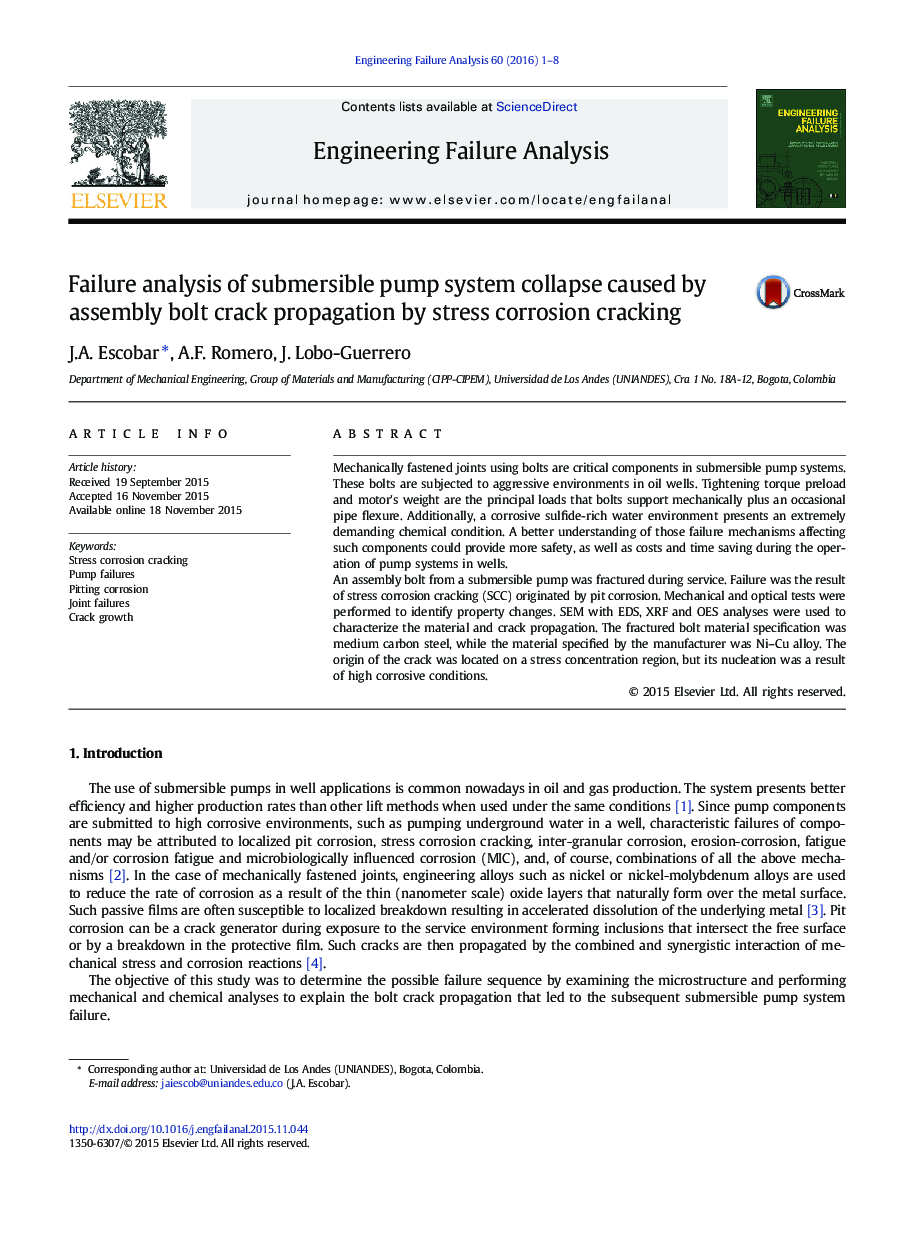| کد مقاله | کد نشریه | سال انتشار | مقاله انگلیسی | نسخه تمام متن |
|---|---|---|---|---|
| 773641 | 1462966 | 2016 | 8 صفحه PDF | دانلود رایگان |
• Failure initiated on the surface of the bolt head root due to pitting corrosion.
• Incorrect material specification for the application
• Cracks propagated to the interior of the material under the presence of water rich in sulfides.
Mechanically fastened joints using bolts are critical components in submersible pump systems. These bolts are subjected to aggressive environments in oil wells. Tightening torque preload and motor's weight are the principal loads that bolts support mechanically plus an occasional pipe flexure. Additionally, a corrosive sulfide-rich water environment presents an extremely demanding chemical condition. A better understanding of those failure mechanisms affecting such components could provide more safety, as well as costs and time saving during the operation of pump systems in wells.An assembly bolt from a submersible pump was fractured during service. Failure was the result of stress corrosion cracking (SCC) originated by pit corrosion. Mechanical and optical tests were performed to identify property changes. SEM with EDS, XRF and OES analyses were used to characterize the material and crack propagation. The fractured bolt material specification was medium carbon steel, while the material specified by the manufacturer was Ni–Cu alloy. The origin of the crack was located on a stress concentration region, but its nucleation was a result of high corrosive conditions.
Journal: Engineering Failure Analysis - Volume 60, February 2016, Pages 1–8
